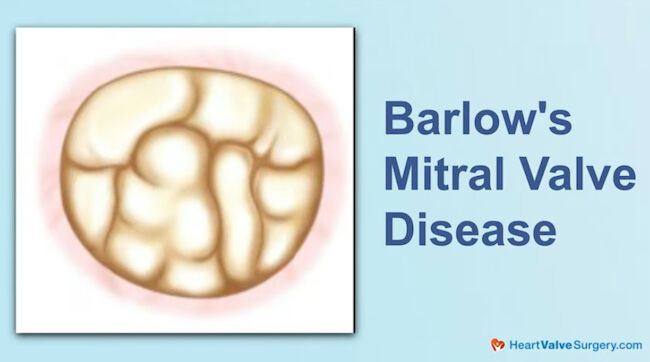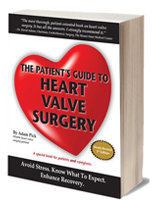Can Minimally-Invasive Robotic Surgery Treat Barlow’s Mitral Valve Disease?
Written By: Allison DeMajistre, BSN, RN, CCRN
Medical Expert: Ibrahim Sultan, MD, Chief of Cardiac Surgery, UPMC, Pittsburgh, Pennsylvania
Reviewed By: Adam Pick, Patient Advocate, Author & Website Founder
Published: August 5, 2025
Minimally-invasive robotic surgery has been available in the United States since 2000. The early robotic mitral surgeries focused on simple repairs to fix leaflet prolapse for low-risk patients. As the field continued to make significant advancements in technology and technique, the criteria for robotic mitral valve surgery have broadened, making it more accessible for patients with different types of mitral valve problems. However, some types of disease, like Barlow’s mitral valve, are more complex. Patients with more complicated disease may question whether they are eligible for robotic surgery or if a traditional open surgery via sternotomy for more direct access to the valve and shorter operative times is a more appropriate intervention.
We received a great question on this topic from John, who asked for a 65-year-old female patient with Barlow’s mitral valve disease. John asked, “Would she be eligible for a less invasive, robotic-assisted mitral valve repair?” To answer John’s question, we met with Dr. Ibrahim Sultan who is the Chief of Cardiac Surgery at UPMC in Pittsburgh, Pennsylvania.
Barlow’s Mitral Valve Disease & Robotic Surgery
Here are the key insights shared by Dr. Sultan:
- What is Barlow’s mitral valve? Dr. Sultan explained that Barlow’s mitral valve is a category of leaky mitral valve or degenerative mitral valve disease. “Both leaflets of the mitral valve are rather leaky, have a certain deficiency, and contribute to the leak. Patients can be highly symptomatic from that, with trouble breathing, trouble lying flat, and over time, they have some degree of heart failure,” he said.

- How do you determine if a patient is eligible for robotic surgery? Dr. Sultan said, “Ninety-eight percent of mitral valves can be repaired successfully and with very good results, as long as they are not tight.” He explained that UPMC in Pittsburgh doesn’t question whether patients are eligible. Instead, they determine whether patients are ineligible for less invasive or robotic-assisted mitral valve surgery. “When they come to see us, we expect they will be candidates.”
- Why would a patient be ineligible for robotic surgery? “There are some patients who’ve had surgery on their lungs or have very small blood vessels that may not be ideal candidates for robotic-assisted, less invasive repair. But outside of that, most patients are eligible and do just as well. It’s a very safe therapy,” said Dr. Sultan.
Thanks Dr. Sultan and the UPMC!
On behalf of all the patients in our community, thank you, Dr. Ibraham Sultan, for everything you and your team are doing at UPMC in Pittsburgh, Pennsylvania!
Related links:
- See Dr. Sultan’s Surgeon Biography and Patient Reviews
- Barlow’s Mitral Valve Disease: Top 6 Facts to Know
- Explore the UPMC Heart Valve Microsite
Keep on tickin,
Adam
P.S. For the deaf and hard-of-hearing members of our patient community, we have provided a written transcript of our interview with Dr. Sultan below.
Video Transcript:
Adam Pick: Hi everybody. It’s Adam with heart valve surgery. com and we are in Los Angeles, California at the society of thoracic surgeons conference. I am thrilled to be joined by Dr. Ibrahim Sultan, who is the Chief of Cardiac Surgery at UPMC in Pittsburgh, Pennsylvania.
Dr. Sultan, it is great to see you again. Thanks for being with me.
Dr. Ibrahim Sultan: Great to see you, Adam.
Adam Pick: We’re here at STS and we’re learning a lot. We’re getting patient questions as well. This comes at us from John, who’s asking for a patient who is 65 and female with Barlow’s mitral valve disease. Would she be eligible for a less invasive, robotic assisted mitral valve repair?
Maybe you can help our community not just answer that question, but share a little bit about what Barlow’s is.
Dr. Ibrahim Sultan: So a Barlow’s mitral valve is, is a category of leaky mitral valve or degenerative mitral valve disease, where both leaflets of the mitral valve are rather bulky, have a certain deficiency, and contribute to leak.
Patients can be highly symptomatic from that, with trouble breathing, trouble lying flat, and over time having some degree of heart failure. Most, 98 percent of degenerative mitral valves can be repaired successfully as long as they are not tight with very good results. When we look at patients, at least in Pittsburgh at UPMC, the question we ask is not if somebody’s eligible, if somebody’s ineligible for less invasive or robotic assisted mitral valve surgery.
When they come see us, we assume and expect that they will be candidates. But, there are some patients who’ve had surgery on their lung or have very small blood vessels that may not be ideal candidates for robotic assisted, less invasive repair. But outside of that, most patients are and most patients do just as well and it’s a very safe therapy.
Adam Pick: Well, John, I hope that helped you. I know it helped me and Dr. Sultan on behalf of John, patients at HeartValveSurgery.com and patients all over the world. Thanks so much to you and your team at UPMC in Pittsburgh for all the great work that you’re doing, helping patients. Thanks for being with me today.
Dr. Ibrahim Sultan: Great. Thank you, Adam.





